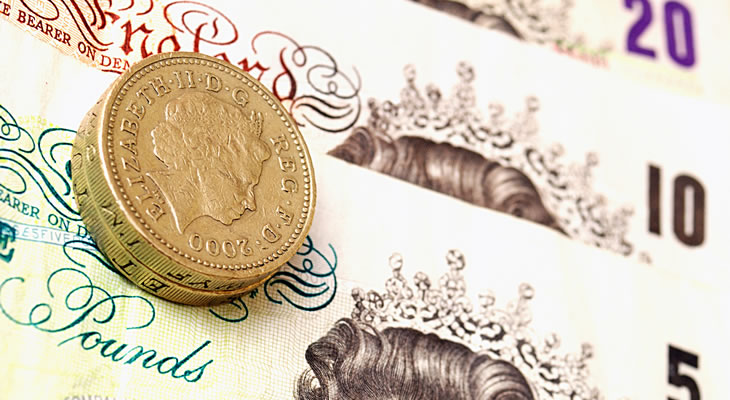- GBP Exchange Rates Mixed – UK house prices rise
- USD Exchange Rates Decline – NAHB Housing Market data disappoints
- CAD Exchange Rates Advance – Oil prices rise on Nigeria outages
- Pound Sterling Forecast to Hold Steady – Subdued volatility on thin trade
Pound Sterling (GBP) Exchange Rates Mixed after House Prices Rise, CBI Cuts Growth
During Monday’s European session the British Pound fluctuated versus its major peers. The absence of any notable volatility, however, can be linked to thin trade. Against some of its major peers, the UK unit edged higher thanks to rising house prices in May, but a report from the Confederation of British Industry (CBI) that cut growth forecasts saw the Pound struggle against others.
CBI officials cut UK growth forecasts for both 2016 and 2017 to just 2%, stating that uncertainty surrounding the EU vote is already having a detrimental impact on economic growth. Even if the UK votes to remain a member of the EU, the long period of uncertainty is likely to have a long-term impact, according to the CBI.
CBI Director General Carolyn Fairbairn said: ‘A dark cloud of uncertainty is looming over global growth, particularly around weakening emerging markets and the outcome of the EU referendum, which is chilling some firms’ plans to invest.’
‘I’ve been talking to advertisers, broadcasters who are seeing slowdowns in the advertising market and some construction companies, so pretty widespread across the economy people are waiting to see what the outcome will be,’ added Fairbairn.
Adding to the sense of uncertainty was a letter published by The Telegraph which showed a large list of business officials backing a ‘Brexit’. Included in the list were current or former officials from HSBC, Goldman Sachs, Sony Europe, Tesco Clothing, Rebok and many others. This undermines arguments from ‘Remain’ campaigners that all big business is backing the UK to remain in the European Union.
US Dollar (USD) Exchange Rates Cool as Housing Data Misses Estimates
In response to less-than-ideal domestic data, the US Dollar declined versus a number of its major peers. May’s NAHB Housing Market Index was forecast to advance from 58 to 59, but the result actually dropped to 57.3. Also of particular disappointment was May’s Empire Manufacturing report which showed activity unexpectedly contracted.
‘The weak-looking Empire State headline index does not change our view that last year’s deterioration in manufacturing is over, but that a real recovery has not yet begun,’ said Pantheon Macroeconomics chief economist Ian Shepherdson.
Subdued market trade has seen the US asset avoid significant losses following the data, however. Traders will be looking ahead to Tuesday’s US Consumer Prices data, which is high-impact and far more likely to provoke volatility. If consumer prices show healthy gains, as have been forecast, the US asset will likely surge in value as the Federal Open Market Committee (FOMC) would be pressured into tightening policy. Conversely, a poor showing in the US inflation data will ease pressure on the FOMC and likely cause the US asset to weaken considerably.
Canadian Dollar (CAD) Exchange Rates Advance as Oil Prices Gain
Today oil prices rose to their highest since November 2015, advancing by over 2% thanks to supply disruptions in Nigeria and a bullish forecast from Goldman Sachs. In response, the commodity-correlated Canadian Dollar edged higher versus several of its major rivals. The appreciation has been minimal, however, thanks once again to subdued market trade.
‘The oil market has gone from nearing storage saturation to being in deficit much earlier than we expected,’ Goldman said. ‘The market likely shifted into deficit in May … driven by both sustained strong demand as well as sharply declining production.’
Also providing support from ‘Loonie’ (CAD) gains was positive domestic data. April’s Existing Home Sales advanced by 3.1% on the month, a record-high and a significant gain over the previous sales growth of 1.5%.
‘National home sales set new monthly records over the past two months, even as activity in Greater Vancouver and the GTA appears to have topped out,’ said CREA President Cliff Iverson. ‘With almost three-quarters of all local markets posting sales gains in April, there are plenty of other places where sales are climbing as we head into the busiest time of the year for homebuyers.’
Friday of this week will be significant for those invested in the Canadian Dollar, with several domestic ecostats due for publication. Of particular significance will be April’s Consumer Price Index data.


Comments are closed.